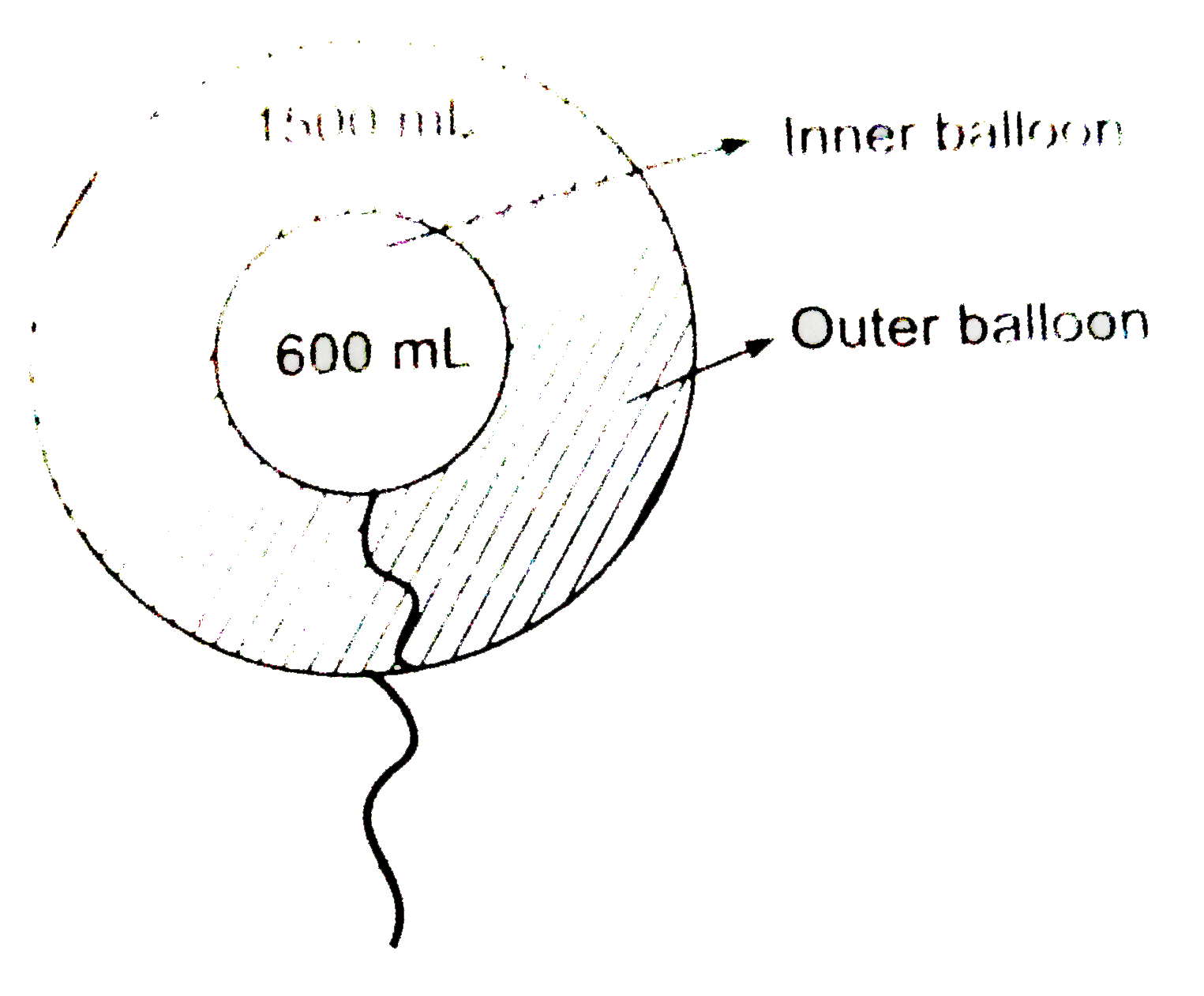A balloon blown up has a volume of 500 mL at 5∘C. The balloon is distended to 7/8th of its maximum capacity.
Will it burst at 30∘C ?
480mL represents 7/8 of the balloon's maximum capacity. Therefore, maximum volume capacity of the balloon is
480×87=548.6mL
Thus, if volume exceeds 548.6mLm the balloon will burst.
(a) Calculation of the volume of balloon at 30∘C:
By Charles's law, we get
V1T1=V2T2
Here, V1=480mL, V2=?T1=278K, T2=303K
Thus, V2=V1T2T1=480×303278=523.16mL
Therefore, the balloon will not burst at 30∘C.
(b) Calculation of the temperature at which balloon will burst:
Here, V1=480mL, T2=278K, V2=548.6mL, T2=?
V1T1=V2T2
∴T2=V2×T1V1=548.6×278480=317.7K
=317.7−273=44.7C∘
Thus the ballon will burst as soon as temperature exceeds 44.7∘C.
Topper's Solved these Questions
- STATES OF MATTERBOOK - CENGAGE CHEMISTRY ENGLISHCHAPTER - STATES OF MATTEREXERCISE - Illustration
2 Videos
- STATES OF MATTERBOOK - CENGAGE CHEMISTRY ENGLISHCHAPTER - STATES OF MATTEREXERCISE - Exercises
21 Videos
- SOME BASIC CONCEPTS AND MOLE CONCEPTBOOK - CENGAGE CHEMISTRY ENGLISHCHAPTER - SOME BASIC CONCEPTS AND MOLE CONCEPTEXERCISE - Archives Subjective
11 Videos
- STOICHIOMETRYBOOK - CENGAGE CHEMISTRY ENGLISHCHAPTER - STOICHIOMETRYEXERCISE - Archives Subjective
33 Videos
Similar Questions
A balloon blown up has a volume of 500 mL at 5∘C. The balloon is distended to 7/8th of its maximum capacity.
Calculate the minimum temperature above which it will burst.
View SolutionA bolloon blown up has a volume of 300 mL at 27% C. The balloon is distended to 56 of its maximum stretching capacity. The maximum temperature above which it will burst is
View SolutionA balloon has 5.0 mole of helium at 7∘C. Calculate
(a) the number of atoms of helium in the balloon.
(b) the total internal energy of the system.
View SolutionA gas occupies 500 mL at 25∘C and 745 mm pressure. What would be its volume at S.T.P.?
View SolutionA bakelite beacker has volume capacity of 500ccat30∘C. When it is partially filled with Vm volumne (at 30∘C) of mercury, it is found that the unfilled volume of the beaker remains constant as temperature is varied. If γbeaker=6×10−6.∘C−1 and γmercury=1.5×10−4.∘C−1 , where γ is the coefficient of volume expansion , then Vm (in cc) is close to __________.
View SolutionA diatomic gas which has initial volume of 10 liter is isothermally compressed to 1/15th of its original volume where initial pressure is 105 Pascal. If temperature is 27∘C then find the work done by gas
View SolutionA balloon containing an ideal gas has a volume of 10litre and temperature of 17∘. If it is heated slowly to 75∘C, the work done by the gas inside the balloon is (neglect elasticity of the balloon and take atmospheric pressure as 105 Pa)
View SolutionA balloon has 5.0 g mole of helium at 7∘C Calculate
(a) the number of atoms of helium in the balloon,
(b) the total internal energy of the system.
View SolutionAssuming the same pressure in each case calculate the mass of hydrogen required to inflate a balloon to a certain volume V at 100∘C if 3.5g helium is required to inflate the balloon to half the volume V at 25∘C .
View SolutionTwo inflated ballons I and II (thin skin) having volume 600 mL and 1500 mL at 300 K are taken as shown in diagram. If maximum volume of inner and outer balloons are 800 mL and 1800 mL respectively then find the balloon which will burst first on gradual heating.

View Solution
